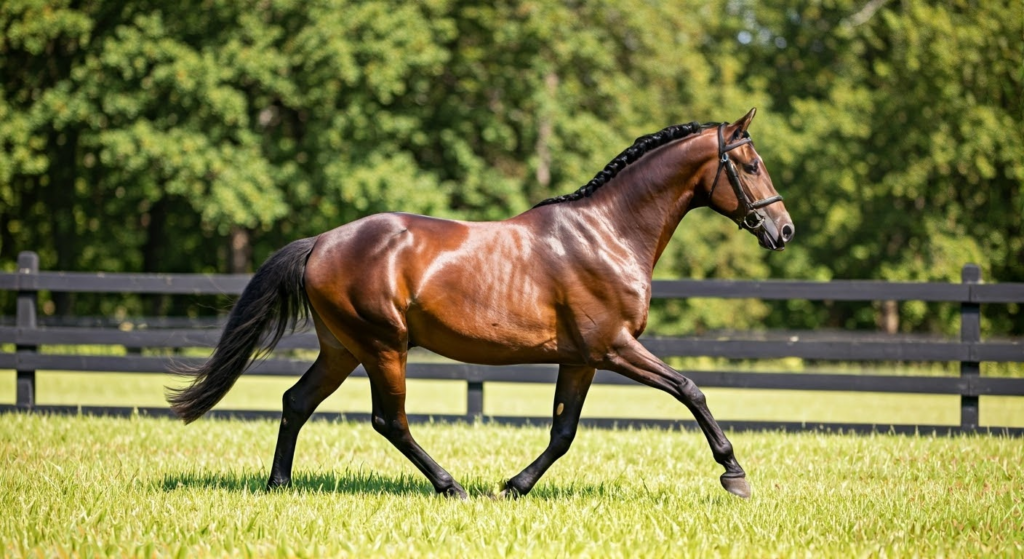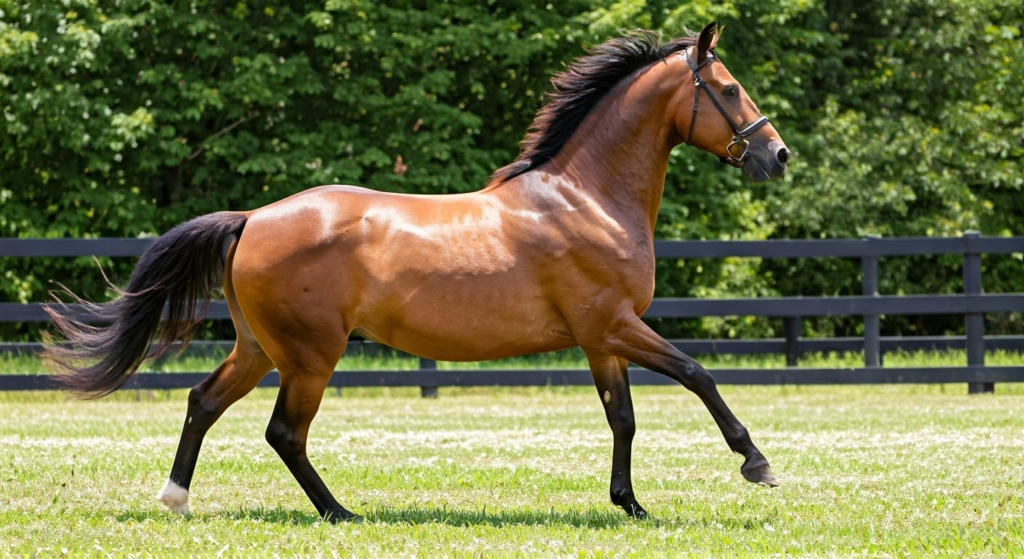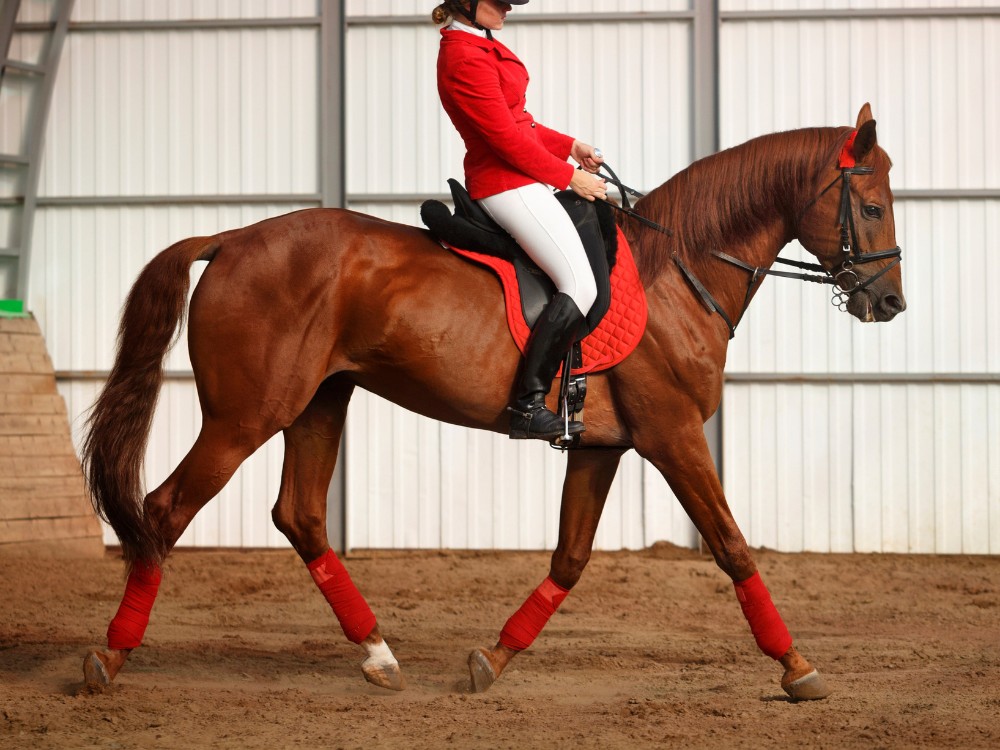
Key Highlights
- Gaited horses are known for their smooth gaits, such as the running walk, fox trot, and tölt, providing a comfortable ride.
- These gaits are natural to gaited breeds and are characterized by their four-beat rhythm and the absence of a jarring trot.
- Gaited horses are ideal for trail riding, endurance riding, and riders who prefer a more comfortable experience.
- Popular gaited breeds include the Tennessee Walking Horse, Missouri Fox Trotter, Icelandic Horse, Paso Fino, and American Saddlebred.
- They come in various sizes, temperaments, and appearances, offering options for different riding disciplines and preferences.
Introduction
In the world of horses, gaited horses are special because they can do unique gaits. These gaits are different from the usual walk, trot, canter, and gallop. They provide a much smoother and more comfortable ride. This is why many people want them for trail riding, where having a smooth and pleasant experience is very important.
Exploring the World of Gaited Horses

Imagine riding a horse that moves smoothly and gently, not bumpy like other horses’ trots. This is what makes gaited horses special. They can do smooth, four-beat gaits that make riding more comfortable. Plus, it helps the horse have better stamina.
These smooth gaits are part of the history of the gaited breeds. They were created to help with specific tasks, like going over tough terrain or traveling long distances with ease. Knowing this history helps you appreciate the special bond you can have with a gaited horse.
Defining Gaited Horses and Their Unique Movements
A gaited horse is known for its ability to do one or more smooth gaits. These are extra gaits that happen between a walk and a canter. People often call them a four-beat “ambling gait.” Unlike a trot, which has a moment when the horse stops moving its legs, these gaits keep the feet moving steadily. This makes the ride smoother.
Common natural gaits include the running walk, fox trot, and other running walks. Each breed has its own footfall patterns and unique experiences, but they all focus on being smooth and comfortable for riders.
Equestrians find gaited horses very appealing. The less bouncy motion means a more pleasant ride. This is especially true for long distances. Gaited horses are great for trail riding, endurance riding, and pleasure riding.
The Natural Gaits That Set Them Apart
One well-known gait is the running walk. This gait is famous due to breeds like the Tennessee Walking Horse. In this gait, the horse’s back feet step over the prints left by the front feet. This creates a smooth, gliding motion.
Another popular gait is the fox trot. This gait has a diagonal four-beat pattern. It gives stability and smoothness, especially on uneven ground. The Missouri Fox Trotter is a breed that is well-known for this particular gait.
These smooth gaits, whether it’s the running walk, the fox trot, or other styles, help keep gaited horse breeds popular. They combine comfort, efficiency, and a bit of elegance. This makes the riding experience better for all types of riders.
The Physical Traits of Gaited Horses

Gaited horses are known for their unique movement, but they often have some similar physical traits too. These traits can help them as riding horses because they aim for endurance and a smooth ride. You might notice they have a muscular build, a somewhat longer back, and strong hooves.
Also, it’s good to note that not every horse in a gaited breed will show these gaits. While these features can be inherited, how they appear can differ from one horse to another. Skilled breeders choose horses with these traits to keep breeding smooth-riding horses.
Anatomical Features Supporting Their Gaits
The ability to walk in smooth, flowing ways is not just learned. It comes from certain body features. For example, some gaited breeds have longer backs. This helps them move more easily and glide better. The angle of their shoulder and hip joints also helps them take longer steps and shift smoothly.
Gaited horses often have strong muscles. This helps them with endurance. They usually have powerful back legs that push them forward during their four-beat gaits. They also have solid back muscles to help support the rider.
Research shows that a gene mutation might influence a horse’s ability to move in these unique ways. Scientists are still studying the details. This highlights how genetics plays a role in their special movements.
Common Coat Colors and Markings
The world of gaited horses is very colorful and varied, just like their gaits. Common gaited horse breeds show many different coat colors and patterns which make them very attractive. You can find everything from the striking black and white spotted coats of Saddlebreds to the deep, solid colors of the Tennessee Walking Horse. There is a gaited horse for everyone.
Some breeds, such as the Appaloosa, stand out with their special spotted coats, showing they have unique genetics. The Icelandic Horse comes in many colors like dun, palomino, chestnut, and black.
In the end, a horse’s coat color or pattern does not influence how well it can gait. It just adds extra charm and beauty to these amazing animals.
Popular Gaited Horse Breeds in the United States
The United States has a strong history of raising and enjoying gaited horses. This has led to a large number of popular gaited horse breeds. These breeds come in different sizes, personalities, and uses, appealing to many horse riders.
Some of the most popular are the Tennessee Walking Horse and the Missouri Fox Trotter. The Tennessee Walking Horse is loved for its smooth running walk. The Missouri Fox Trotter is well-known for its steady fox trot gait, which helps it move easily over rough ground.
The One and Only Peruvian Horse
The Peruvian Horse is celebrated for its unique, natural gait, known as the paso llano. Unlike the trot found in most other horse breeds, the Peruvian Horse’s gait is a smooth, four-beat lateral movement that provides an exceptionally comfortable ride.
This gait is innate, meaning Peruvian Horses don’t require specialized training to perform it—they inherit this movement through selective breeding. The paso llano allows riders to travel long distances without the typical bounce or discomfort associated with other gaits, making the Peruvian Horse an ideal choice for trail riding and endurance.
Additionally, this gait showcases the breed’s elegance, as each step is both graceful and rhythmic, with the horse’s head and neck held proudly, adding to its majestic appearance. This natural gait makes the Peruvian Horse a pleasure to ride and sets it apart as one of the most sought-after breeds for those seeking smoothness, comfort, and style.
The Smooth Tölts of the Icelandic Horse
The Icelandic Horse comes from the tough land of Iceland. This breed is known for being strong, versatile, and having special unique gaits. They might be small, but they are strong and can easily walk over rough terrain, making them great riding partners for adults.
What makes the Icelandic Horse special is its ability to do the “tölt.” This is a very smooth four-beat gait, like an ambling gait. In the tölt, the horse’s legs on the same side move together. This gives a comfortable ride. Here are some important features of the Icelandic Horse and its gaits:
- Tölt: This gait is very smooth. Riders can sit almost still in the saddle while moving.
- Five Gaits: Some Icelandic Horses can do up to five gaits, like the tölt, walk, trot, canter, and flying pace.
- Hardy and Adaptable: These horses have been bred for many years in Iceland’s tough weather. They are strong, quick, and able to handle tough conditions.
The Graceful Glides of the Tennessee Walking Horse
The Tennessee Walking Horse is known for its smooth and elegant moves. It has a special gait called the running walk, which makes for a comfy ride. This breed is great for pleasure riding and can cover long distances without any trouble. Other gaits, like the fox trot and paso llano, also help the Tennessee Walking Horse stand out. The flat walk and slow gait are much loved by trail riders and are used in competitive events too.
Why Choose a Gaited Horse for Riding?
For many people who ride horses, picking a gaited horse means getting a very comfortable ride. Gaited horses can move smoothly from one pace to another. This helps reduce how much they bump the rider. It makes riding enjoyable for people of all ages and abilities.
Gaited breeds are not only smooth but also friendly and eager to work. This makes them a good fit for many riders. Whether you want to go on long trail rides, join competitions, or just take it easy, riding a gaited horse can be a great experience.
Comfort and Ease for Long Rides
Imagine sitting in the saddle and moving smoothly along beautiful trails. For people who love trail riding and endurance riding, this is what attracts them to a gaited horse. Their gentle gaits reduce stress on both the horse and rider, letting them ride longer and enjoy it more.
Without a bumpy trot, riders face less strain on their joints and muscles. This means a more comfortable ride, even after being on the saddle for hours. It makes pleasure riding much more enjoyable, creating a stronger bond and more fun on the journey.
For those with physical challenges or anyone who wants a gentler ride, gaited horses are great. They help more people enjoy the happiness and connection that come with horseback riding.
Suitability for Beginner to Advanced Riders
One remarkable thing about gaited horse breeds is how good they are for many types of riders. This includes beginners who are new to horses as well as experienced riders who want a smooth and easy ride.
For beginners, riding a gaited horse can be a less scary way to start. These horses usually have smooth gaits and gentle personalities. This helps build confidence and a strong base in horsemanship.
Gaited horses are not just great for trail riding. They also do well in areas like gaited dressage, where they show off their style and accuracy. They are strong and steady, which makes them perfect for competitive trail riding too.
Frequently Asked Questions
How do I identify a gaited horse?
You can spot a gaited horse by watching how it walks. Unlike the regular two-beat trot that has a moment of suspension, gaited horses walk with a smooth style called lateral ambling gaits. In this four-beat rhythm, the feet on one side move closely together.

